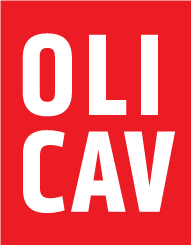Today, I was interviewed by Daniel Budd from The Staffroom. Here are his questions and a summary of my answers.
Can you give our listeners some background and info about yourself?
I’ve spent nearly all of my teaching career in special schools and during that period had close contact with educational psychologists. As a result, I developed a behavioural framework that I never entirely dropped when it became (perhaps rightfully) strongly devalued.
The well-established focus on visual communication in special schools helped propel me to extend this approach to mainstream professional learning. My father’s architecture profession has been a strong influence as I emphasised a more structural and iconic style than current practitioners of sketch noting.
Can you tell us why you think your visuals are becoming so popular with educators around the globe?
Being free certainly helps their popularity! From the point of view of their content, I’d say that the predominance of words has helped. They are, for the most part, verbal summaries illustrated with a few drawings or icons. This helps teachers get a rapid understanding of a topic, in an easy-to-read format, with references to follow up should they want to.
In terms of style, I spend a great deal of time thinking about the organisation of the material. This involves creating a hierarchy of information and positioning it so it aligns to a regular pattern making reading easier. Alongside this, I use a restricted colour palette and remember to safeguard white (ie unused) space.
Do you think all teachers should know about cognitive psychology?
Yes! It teaches us about our biological limits (ie working memory) and tells us what strategies work best at addressing this (retrieval practice, spaced practice, elaboration and so on).
Because cognitive psychology research is conducted in laboratories, it used to be thought irrelevant to the rich, messy world of classrooms. However, the precise replication of studies over several decades (some for a century) point us to very well established truths about how we process and think about information that cannot be ignored.
Can you explain why you think sketch noting is an effective method of learning?
I’d like to distinguish between a teacher using sketch noting in order to support their explanation, and students using it for learning.
Teachers benefit in the same way they do when constructing knowledge organisers — it makes them identify the key pieces of knowledge. Sketchnoting has the additional possibility of identifying the connections between these, sometimes isolated, facts.
For students it’s different. They are novices and, as such, do not have the knowledge base in order to make such judgements. However, when supported by teachers’ structures and explanations, and when they are further along the expertise continuum (towards the end of a module or topic), this approach can pay dividends.
In both contexts, the main part that makes the biggest impact on learning is the summarisation of text. It’s nothing new— just a current branding of the old précis many of us did while students.
The visual aspect can be very useful when the sketches are explanatory in nature and not merely decorative. It’s important, therefore, for teachers to be keenly aware of this difference and to prevent students avoiding the hard work of summarising for the more enjoyable task of doodling and colouring.
Can you give teachers some practical tips on how to create effective visuals that support learning?
Concentrate first on the words and create a hierarchy with the most important concepts being clearly signalled by size, colour or shape of letters. Order your work on the paper/screen so the elements align and remember to leave sufficient space around them that they are able to ‘breathe’. If everything stands out then nothing stands out. This applies too to colour. Practice restraint and your colour/s will create more powerful signals to what you have identified as being important.
As to drawing, remember we are talking about communication, not art. So use simple lines and shapes. Try viewing Dave Gray’s wonderful introductions on YouTube. Don’t use images from Google. Instead, find a way of tracing them as simple lines with backgrounds cut out, as line drawings are shown to be fare more instructive than photographs or highly coloured drawings. Make it all simple, not complicated.
If you could recommend one professional reading book to a new teacher, what would it be and why?
I recommend Daisy Christodoulou’s Seven Myths About Education. New teachers are likely to be told a variety of things about how to teach that are not effective but are very time-consuming. Daisy’s book will tell new teachers what is misguided advice and what to be wary of. In the light of the problem in the UK of teacher retention — especially of new teachers — knowing what not to waste your time on is priceless.

